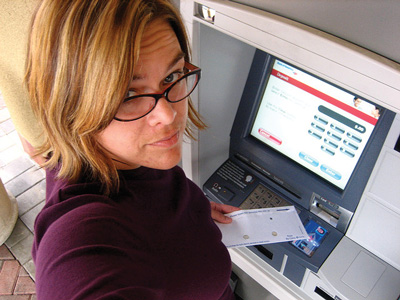EVERYTHING YOU NEED TO KNOW ABOUT OVERDRAFT PROTECTION
by Paul Sisolak
Overdraft fees are a big point of contention for customers because of the exorbitant penalties charged to our checking accounts by our banks if we withdraw more money than we have on deposit even if it’s only a dollar or two over our available balances. It could be that we overestimated our funds with that big purchase from Best Buy or were a dollar short after ordering that Starbucks latte. Anyone can attest that no $4 cup of coffee is worth a $35 overdraft fee.
If you’re a responsible spender you’re likely not being penalized with overdraft charges on a regular basis. However, it’s still important to learn how to safeguard yourself against them. There are overdraft fee laws on the books to help customers like yourself, and they’re relatively easy to understand.
Luckily for us, there’s also a new piece of proposed Congressional legislation taking the side of consumers in fighting unfair overdraft practices.

Photo credit: miggslives
Breaking Down the Overdraft Protection Law
Banks and financial institutions make a killing on overdraft charges. According to a report released recently by the Consumer Financial Protection Bureau the average overdraft fee charged by major banks last year was $34 per transaction, and a more modest $30 at member centric credit unions.
The report also stated that up to 61 percent of bank fees were for overdraft transactions, and noted that the banking industry earned $12.6 billion in consumer overdraft fees
in 2011.
That’s because there aren’t enough people out there who know their rights under the Overdraft Protection Law. This legislation went into effect in July 2010 and allowed the Federal Reserve to prohibit all banks from automatically enrolling their customers in overdraft coverage.
Overdraft coverage is what happens when we’re charged an overdraft fee. Essentially, when we have insufficient funds sending our checking account into the negative, our bank “covers” the difference but hits us with its customary overdraft fee for the trouble. Before the Overdraft Protection Law banks were not required to tell their customers about their overdraft policies or what customers’ alternatives were if they were charged an overdraft.
So, while overdraft fees themselves are not illegal, a financial institution failing to tell a customer about them is. If you’re looking to open a checking account, Divya Raghavan of Nerdwallet explained what overdraft options you have that your bank is required to tell you about:
- Opt for overdraft coverage. You can still choose to take your chances with $30 plus in overdraft fees and ensure you don’t approach the red in your checking account.
- Opt for overdraft protection. Basically, an automatic funds transfer according to Nerd Wallet. When you have insufficient funds you allow your bank or credit union to transfer the necessary money from a linked savings or other deposit account to make up the difference. This service normally comes with a $10 to $12 fee — pricey when it racks up, but a lot cheaper than a standard overdraft fee.
- Opt for nothing. Similar to what happens with a credit card. If you don’t have enough money in your account to cover a purchase the transaction is declined at the merchant’s point of sale.
Remember, it’s your legal right to be informed of these options.
More Proposed Overdraft Fee Laws
A new piece of Congressional legislation to better protect consumers from overdraft fees was introduced to the House of Representatives in March. Rep. Carolyn Maloney (D-NY) wrote the bill and hopes to see it voted into law by the U.S. Senate. She wrote in the Huffington Post:
“My bill would prohibit institutions from manipulating the order of transactions and require that overdraft fees … be reasonable and proportional to the amount of the overdraft. It also limits overdrafts to one per month and six per year, and requires a consumer’s affirmative opt-in to any overdraft plan. It is going to be a tough fight to get this bill passed. But fraud, deception and misrepresentation are the sorts of things that government should try to stop.”

Photo credit: Betsssssy
Save Your Checking Account From Overdraft Fees
Laws or no laws, the best overdraft protection is you. Smart spending practices help you from hovering dangerously low to the zero dollar mark. Here are some tips culled from the web on avoiding overdraft fees:
- Use cash. Dan Caplinger of Daily Finance calls it the “No-Tech Method.” If you’re spend happy with that debit or credit card, withdraw an allotted amount each month for expenses you’d normally transact through your checking. When you run out, don’t use your plastic or walk to the ATM.
- Budget your finances. By keeping track of every single expense in your checkbook, you’ll know exactly how much you have in your checking account at any moment leaving you with no doubt if you’ve got enough money to cover your transactions and avoiding an overdraft charge.
- Available vs. total balance. Just as deposits into your checking account might not show up for a few days, the same goes for withdrawals and debits. If you’re not balancing your finances, as per the bullet point above, and keeping track of spending, you might mistake your total balance for your available balance which could be considerably less than you think. And that could be the last dollar or two that sends you into overdraft land.
Combining these practical money awareness tips with the assurance of recent and proposed laws will guarantee that you never receive another overdraft fee again and that’s money lining your pockets, not the bank’s.

© 2014 TLC Magazine Online, Inc. |